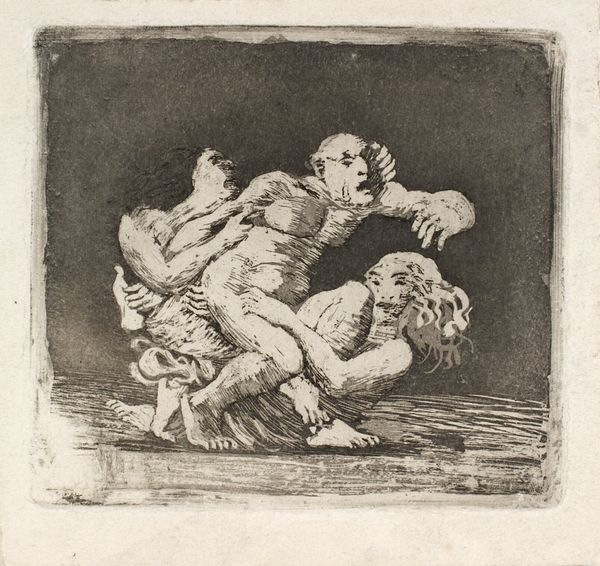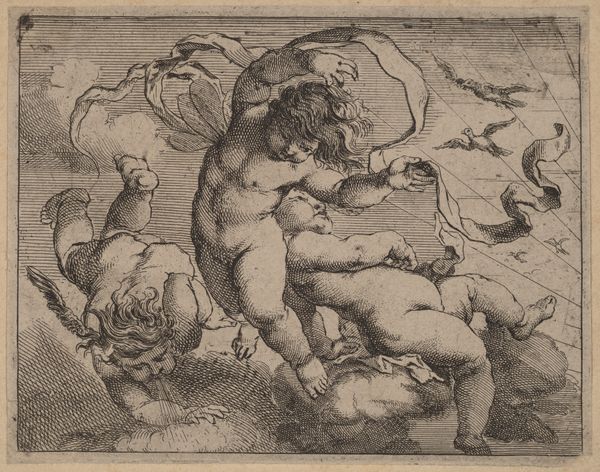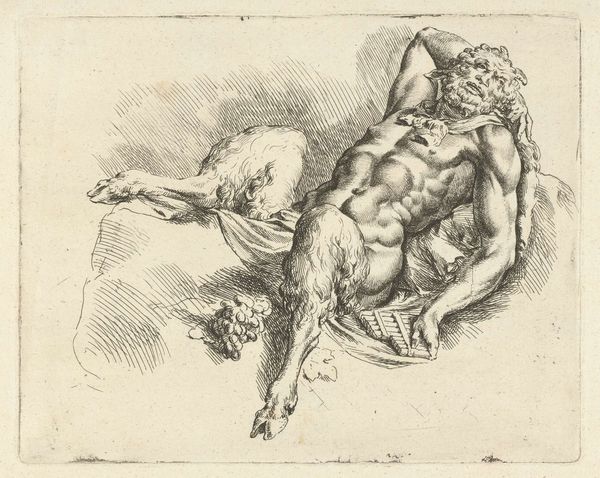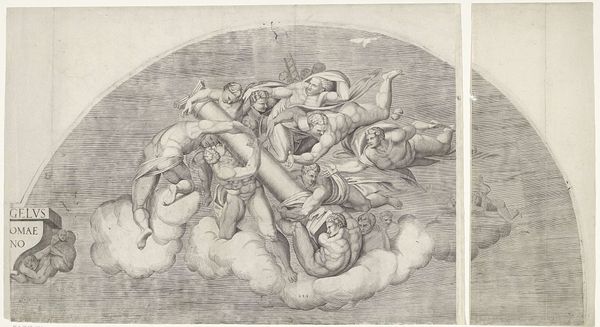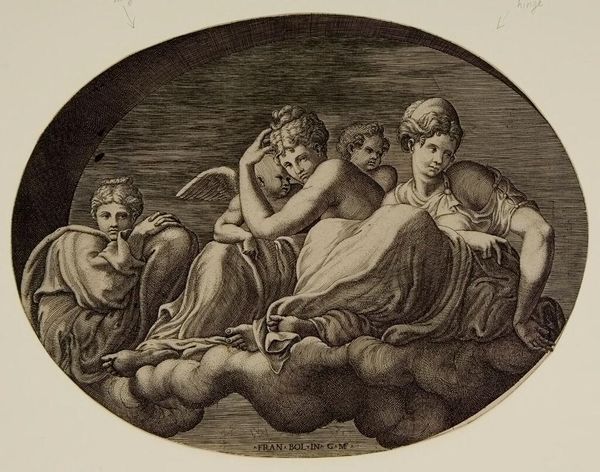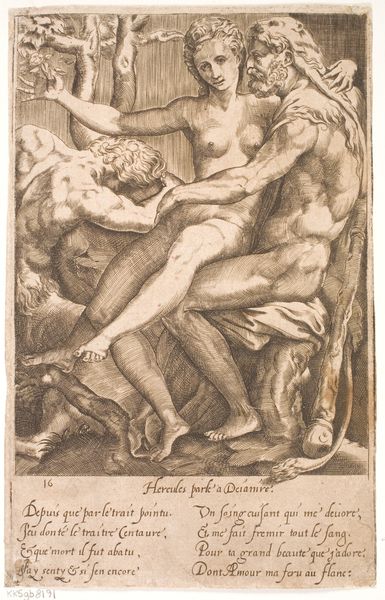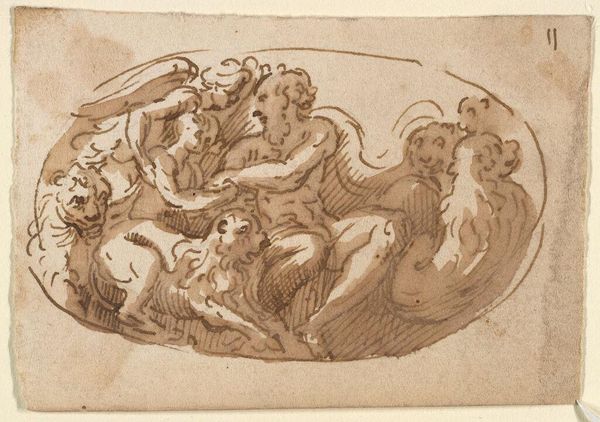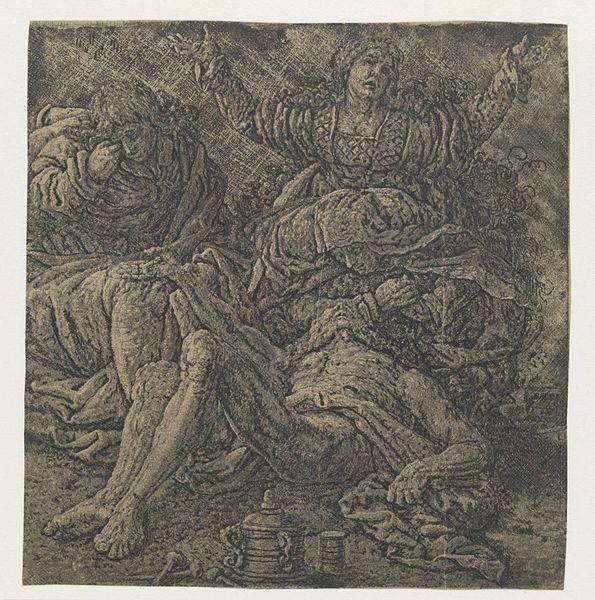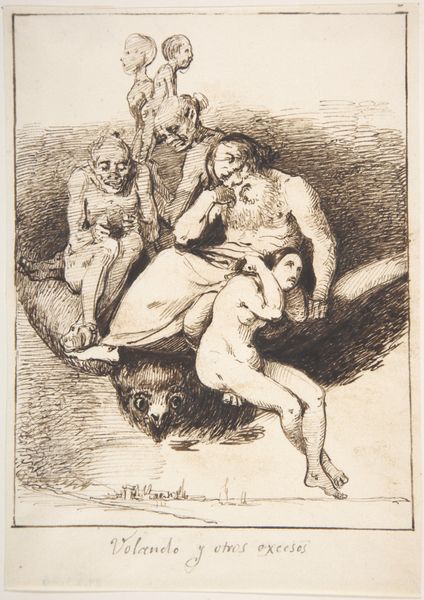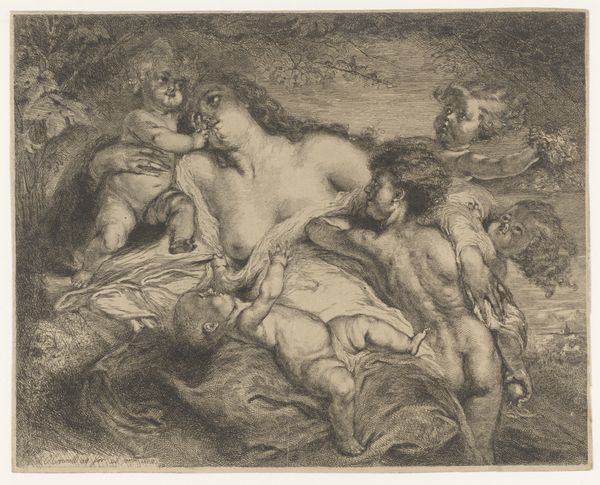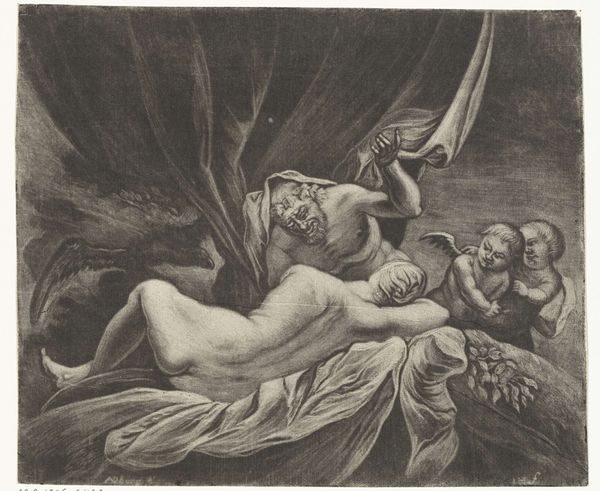
aquatint, print, etching
#
aquatint
# print
#
etching
#
figuration
#
symbolism
#
erotic-art
Dimensions: 120 mm (height) x 108 mm (width) (plademaal)
Curator: We're looking at "Two Women Fighting over a Man" by Oluf Hartmann, an etching and aquatint print made in 1907. It's currently held at the SMK, the National Gallery of Denmark. Editor: Visceral is the immediate word that comes to mind. The figures seem almost to leap off the paper despite the subdued tones and diminutive scale. Curator: It’s the dramatic tension created by the central figure being pulled and prodded, dividing the composition. Each of the women grasping towards this figure is clearly articulated through sharp contours. The etching skillfully uses hatching and cross-hatching to build form, and to generate visual weight. Editor: This imagery is ancient, it evokes primordial conflicts— the struggle over resources, in this case perhaps represented as a single figure rather than as wealth or power. Is the implication that the man is simply a prize to be won? The desperation of the women seems incredibly intense and raw, almost bestial. Curator: Symbolism certainly plays a key role here. Hartmann deliberately simplifies the human forms, turning them into representations of raw emotion. The near-absence of background contributes to the feeling that we are seeing a distilled and intensified conflict. The erotic undertones are undeniable, aren’t they? Hartmann explores taboo themes prevalent in art around the turn of the century. Editor: Exactly. There’s the symbolic power, the sense of ritual almost, suggested by the lack of narrative context. We're drawn into a symbolic space of conflicting desires, an emotionally charged struggle depicted through bodies locked in perpetual conflict. The image becomes a timeless statement about power dynamics and possessiveness. Curator: Indeed, stripping away extraneous detail leaves only the underlying forms and relationships exposed. The strength of the work really lies in this formal economy. Hartmann forces us to consider the dynamics in play between those figures, a lesson even today. Editor: It definitely encourages us to explore the universality of these primal battles. So relevant in the depiction of conflict in culture across time.
Comments
No comments
Be the first to comment and join the conversation on the ultimate creative platform.
